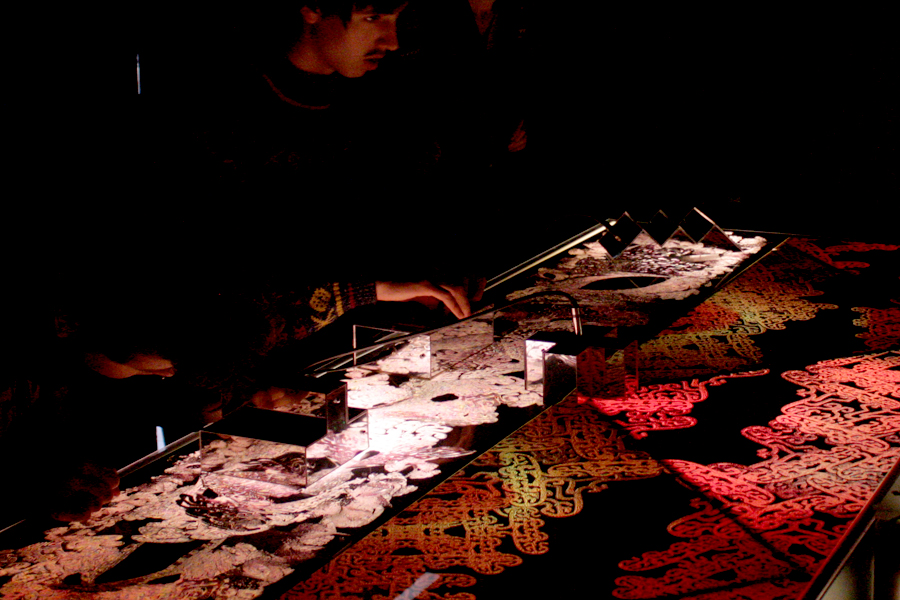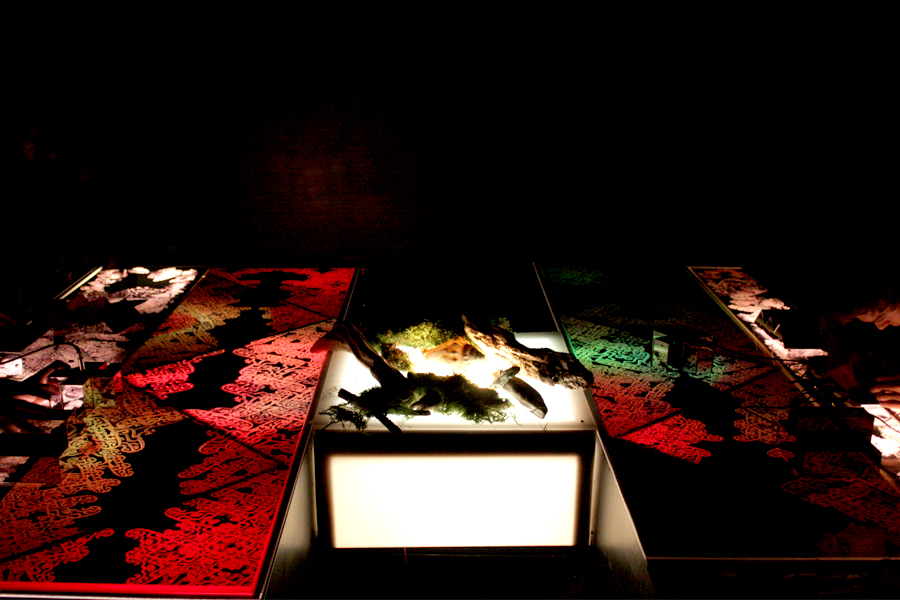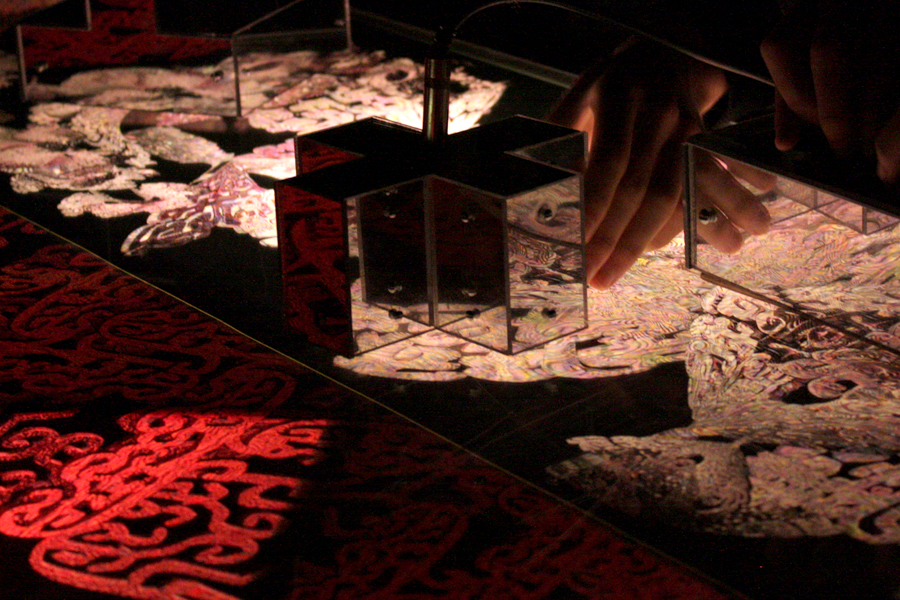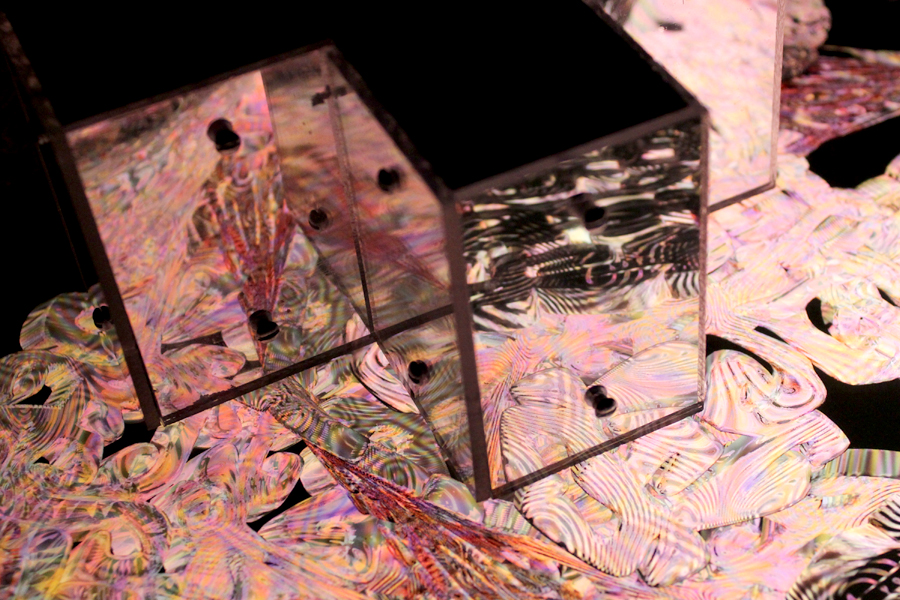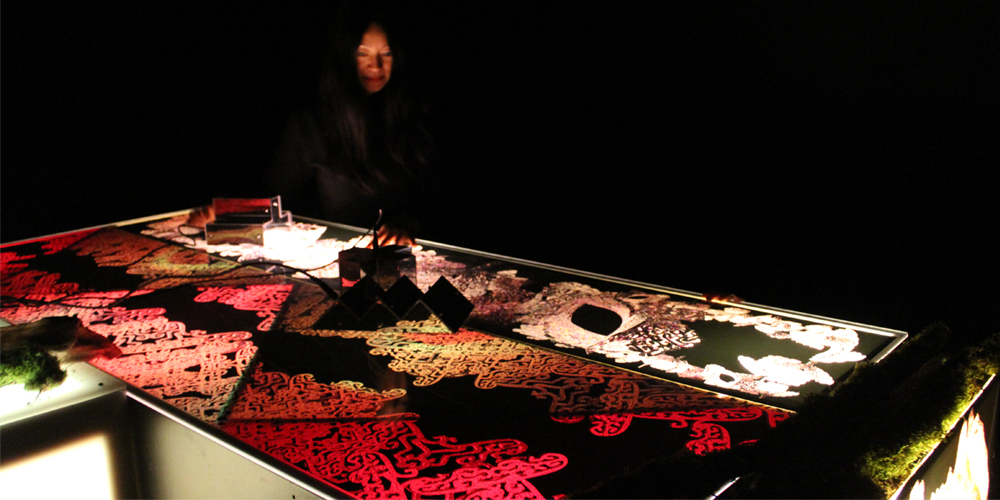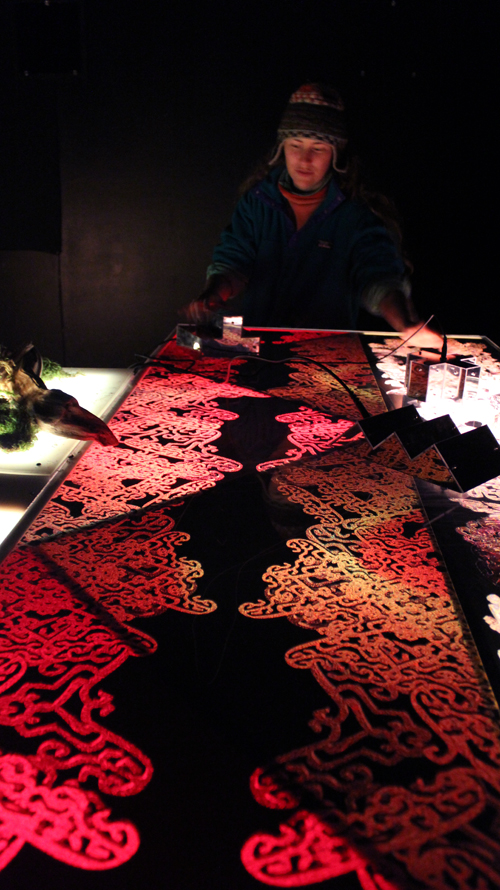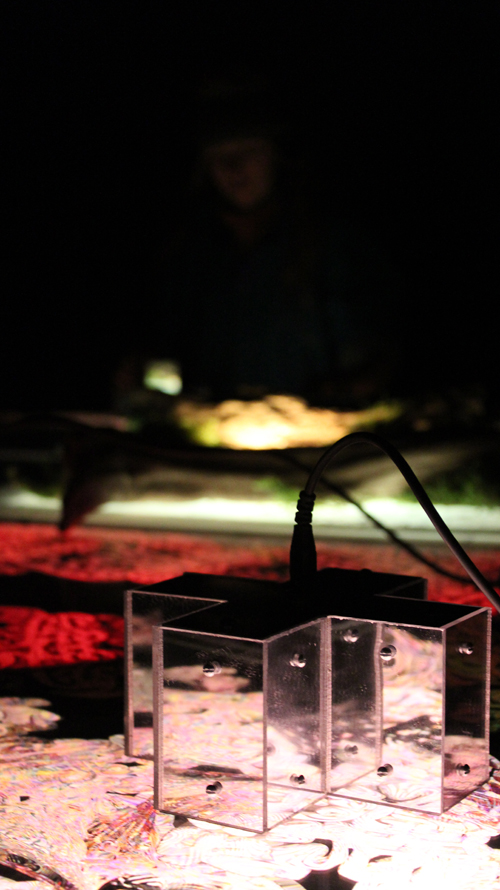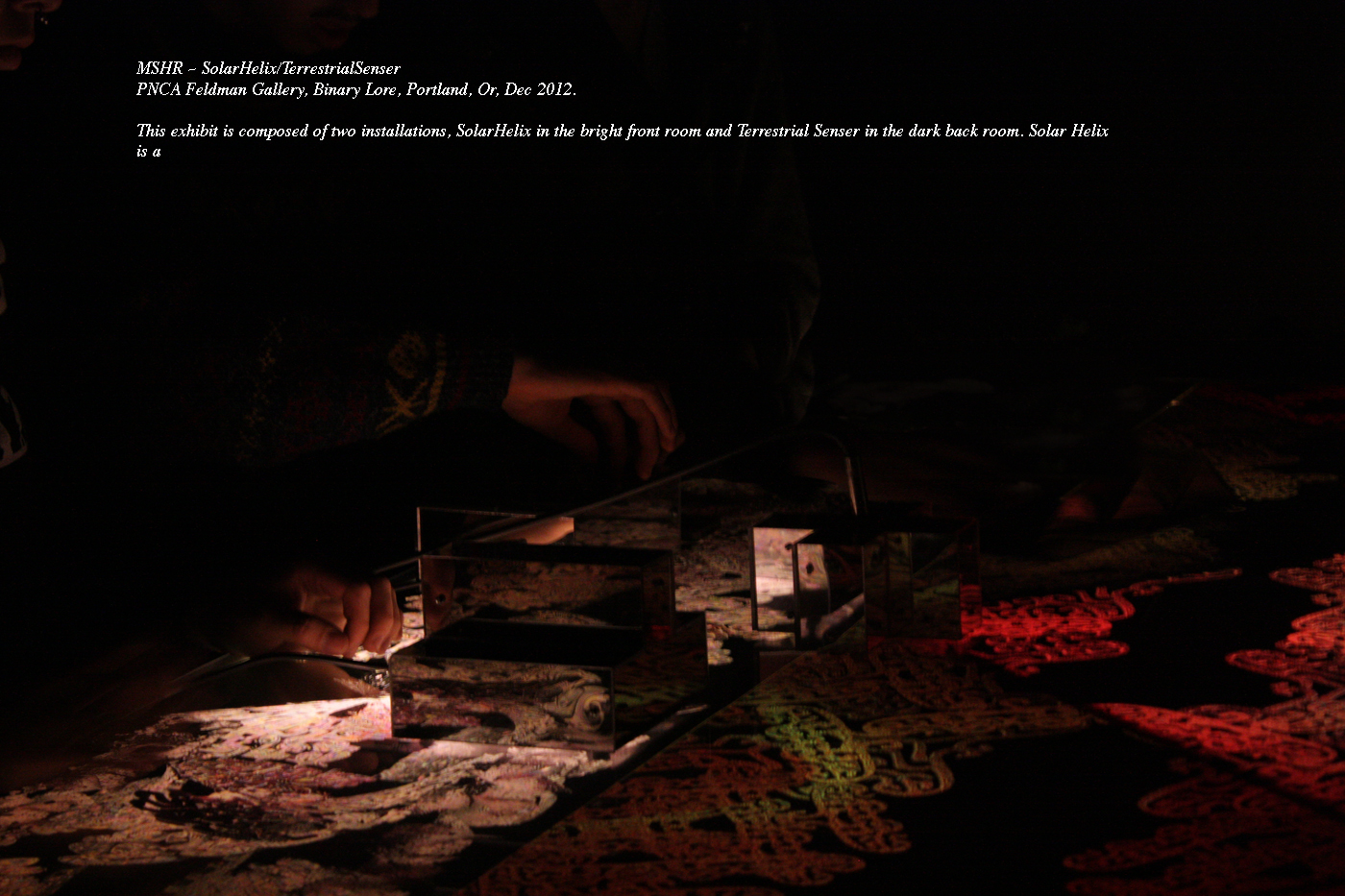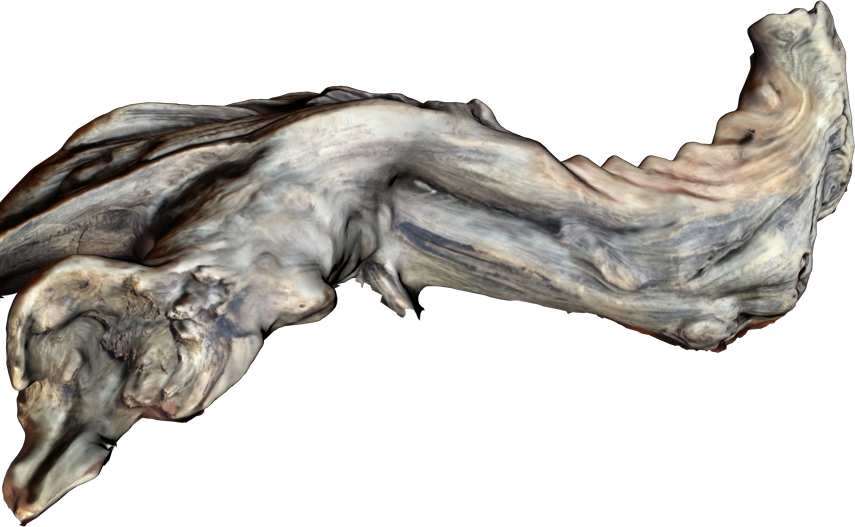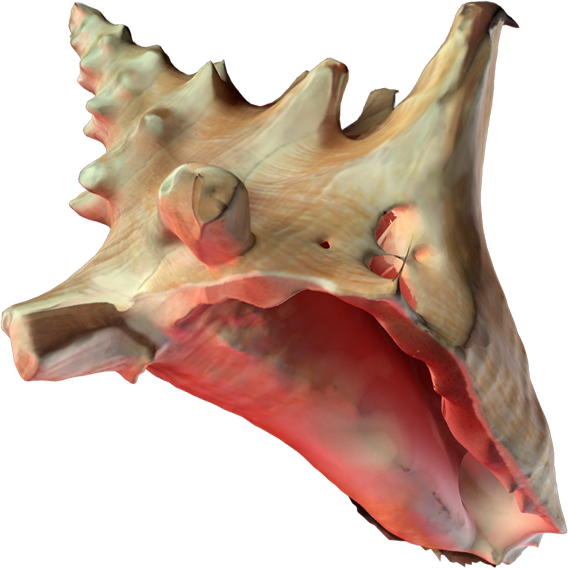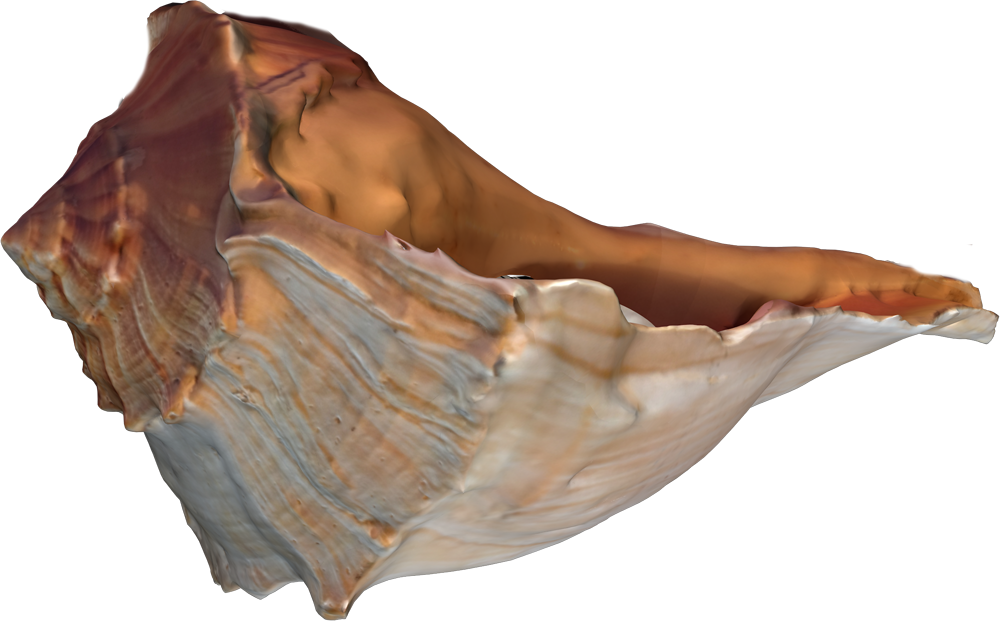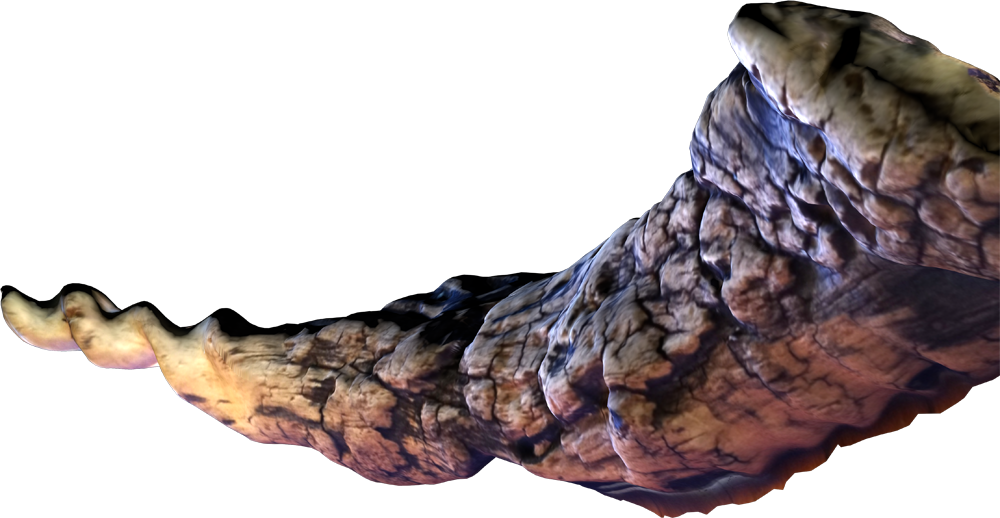SolarHelix consists of two opposing computer-woven tapestries, designed using 3d scans of the conch shells and carved driftwood pieces that are placed around them collaged with digitally constructed 3D forms. Two light boxes lie along the sids of the piece, each containing a digital print of CG hieroglyphs and more 3D scans of the surrounding objects. At it's center is a human circuit: a mirrored, geometric synthesizer rests on top of stacked driftwood pieces, with two metal plates on either side acting as ports for their human conductors to step into the piece, and complete it by finishing the circuit and playing the electronic sound using each others faces, hands and arms.
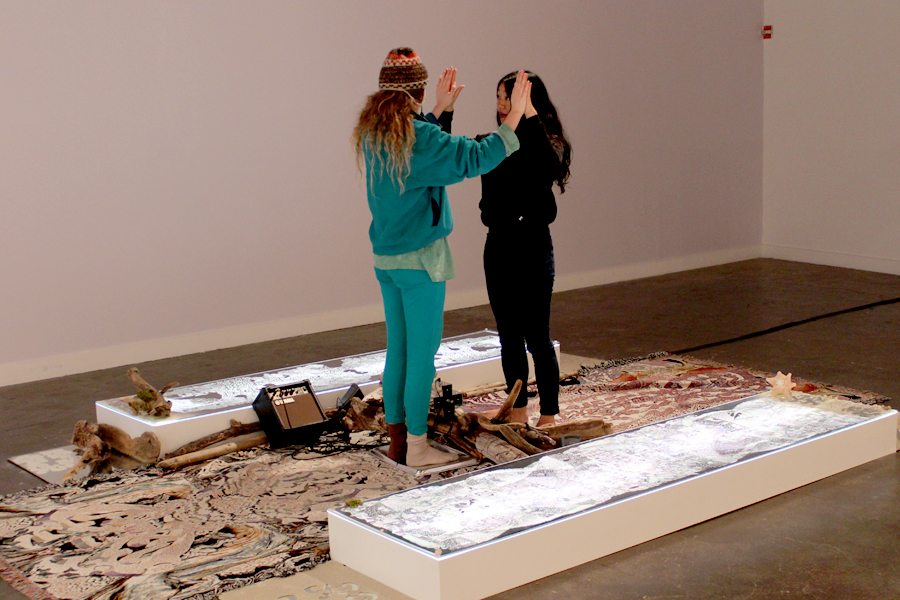
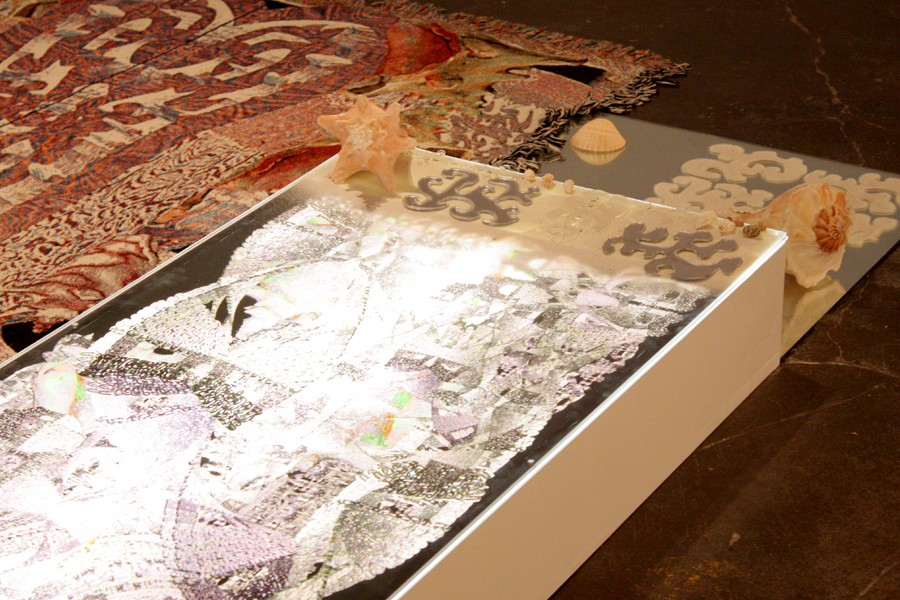
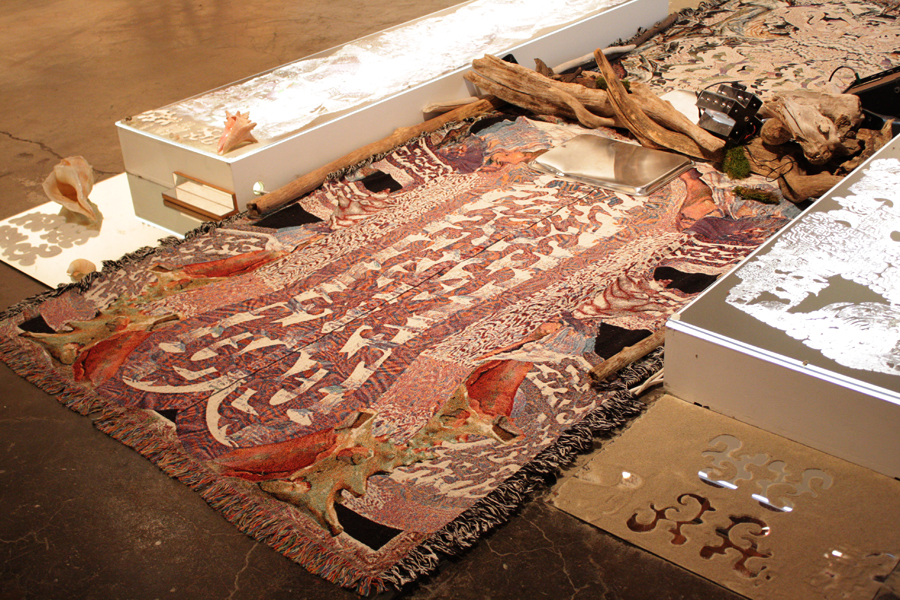
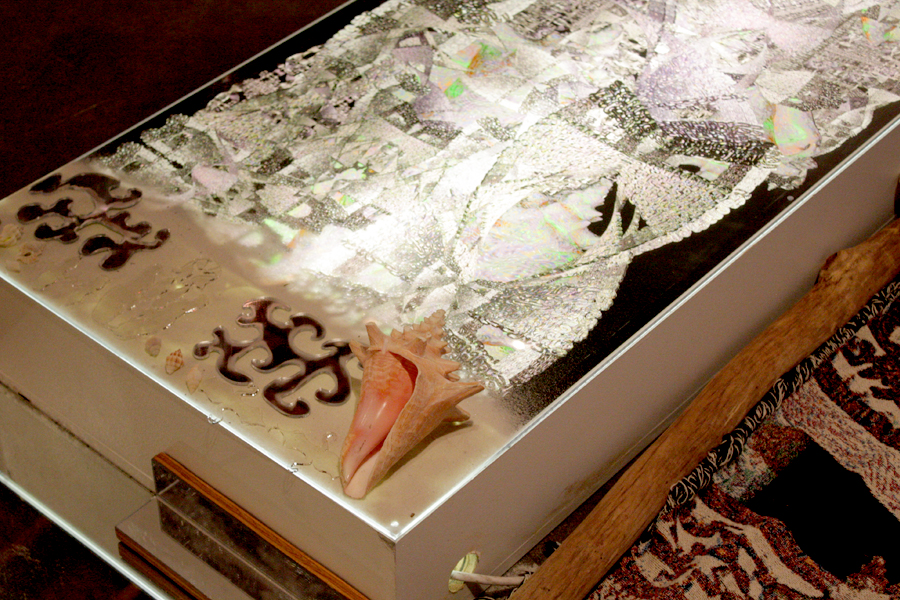
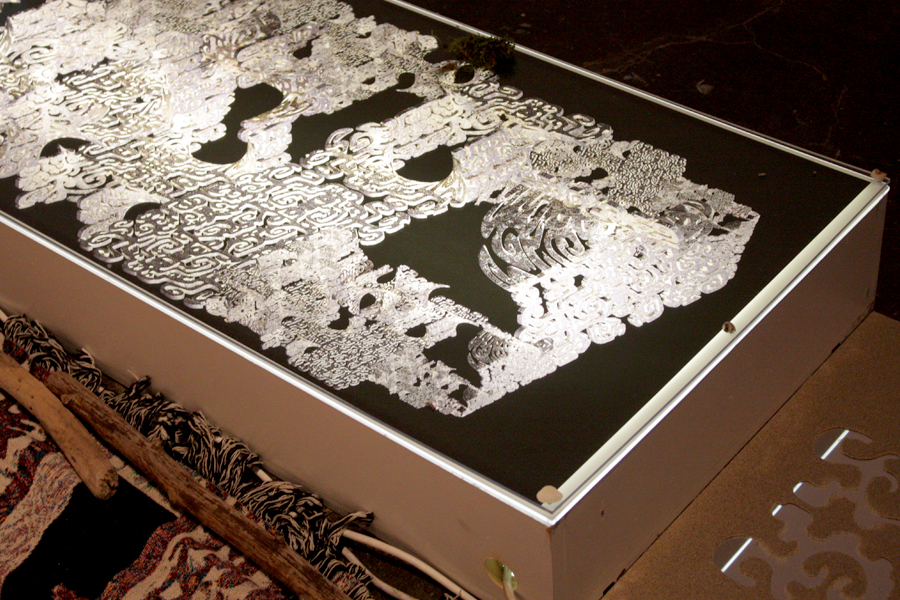
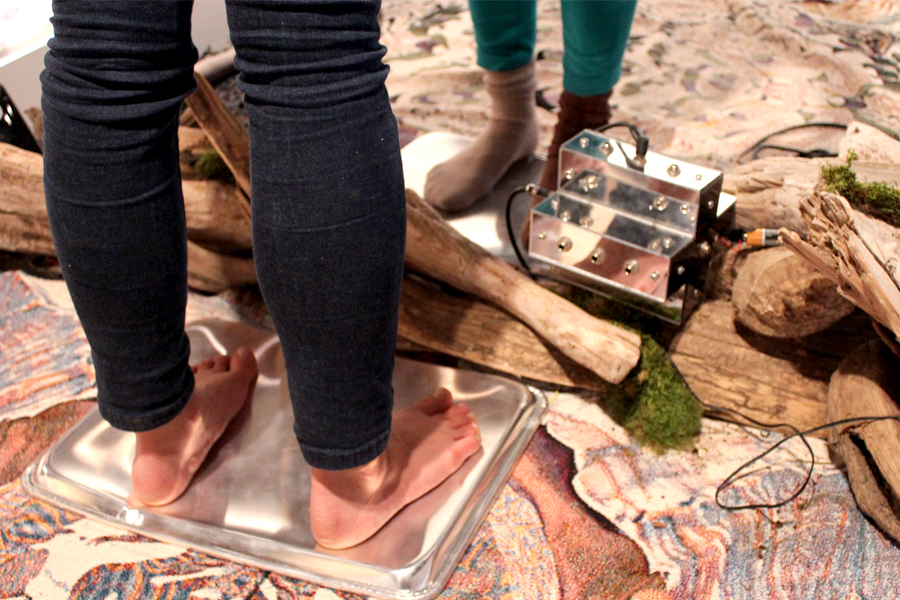
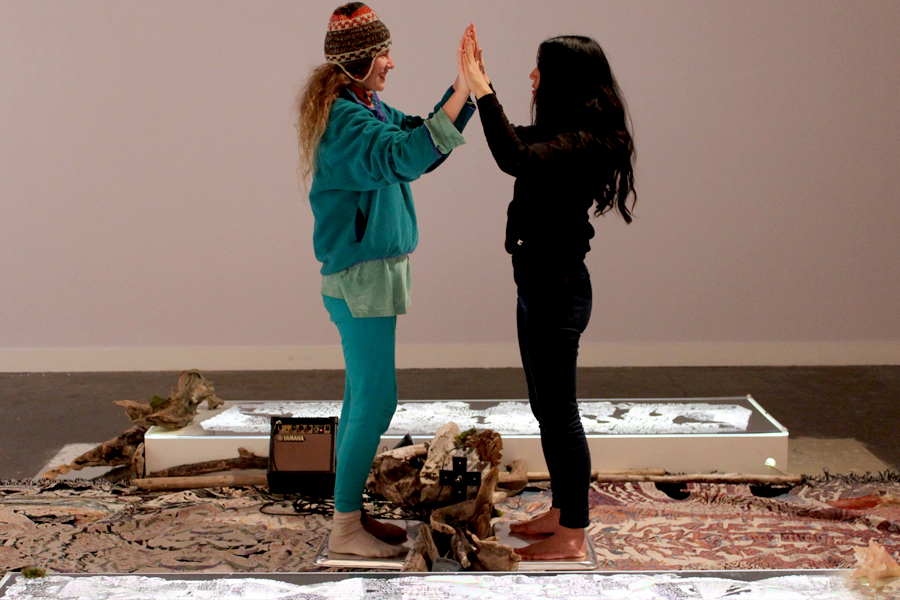
PNCA students explore realms within TerrestrialSensor by sliding geometric, mirrored controllers along illuminated hieroglyph-like forms on the table top. The room is black on all surfaces and completely dark except for the light emanating from the tables in the center and a meshwork created by a green lazer beam overhead. As the mirrored shapes move across the images, they are "wrapped" in the texture of the glyphs, forming kaleidoscopic patterning along its planes. These mirrored objects contain optical sensors that modulate two analog synthesizers as they "read" the information on the table's surface. The synthesizers feed into a color organ that uses the volume and frequencies of the sounds to control an array of colored lights embedded in each table. The result is an organic light/audio feedback system that visitors are invited to engage through the tactile manipulation of visual objects.







